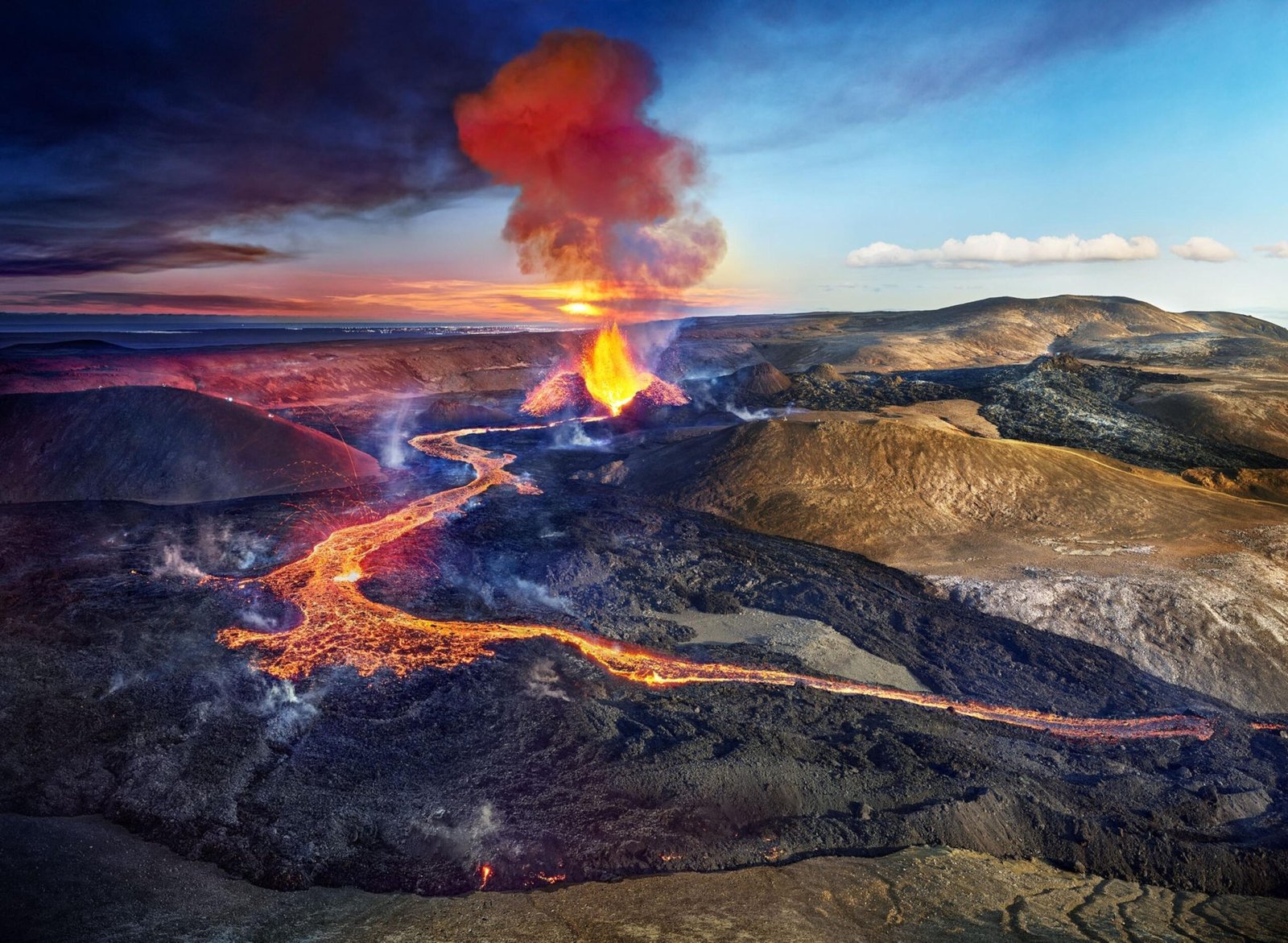Iceland, a land of fire and ice, has witnessed yet another fiery spectacle as the relentless Fagradalsfjall volcano erupts for the seventh time this year, a captivating display of nature’s raw power amidst the ethereal landscapes of the North Atlantic island. As streams of molten rock cascade down its slopes,Iceland’s fiery heart continues to beat, enchanting and awing those who dare to witness its incandescent dance.
– Unleashing Natures Fury: Icelands Volcanic Renaissance
Iceland’s Fagradalsfjall volcano has once again erupted, showcasing the country’s ongoing volcanic renaissance. This marks the seventh eruption in Iceland this year, highlighting a remarkable period of geological activity that has captivated scientists and spectators alike.
Historically, Iceland experiences an average of one to two eruptions annually. However, the recent surge in volcanic activity is unprecedented in recent times. While the current eruptions have posed limited risks to populated areas, they provide valuable insights into the dynamic nature of Iceland’s volcanic landscape.
| Eruption Characteristics | Details |
|—|—|
| Location | Fagradalsfjall volcano, Reykjanes Peninsula |
| Duration | Ongoing |
| Lava Flow | Minimal, confined to immediate vicinity |
| Ash Cloud | Negligible, limited local dispersal |
| Seismic Activity | Moderate |
| Hazard Level | Green (low risk) |
– Scientific Insights into the Recurring Volcanic Activity
Scientific Insights into the Recurring Volcanic Activity
Iceland’s relentless volcanic activity is a scientific enigma that has captivated geologists worldwide. Multiple eruption events have occurred this year alone, raising questions about the underlying mechanisms.
Analysis of seismic data reveals that the volcano is fueled by a shallow magma reservoir, located just a few kilometers below the surface, and the magma is highly silicic, which makes it particularly viscous. This viscosity causes the magma to ascend slowly through the volcano’s conduit. The repeated eruption events suggest that the magma supply is being replenished continuously by the underlying mantle, creating a cycle of pressurization and release.
– Proactive Measures for Minimizing Volcanic Risk
Proactive Measures for Minimizing Volcanic Risk
Monitoring and Early Warning Systems:
- Implement real-time monitoring networks to detect and forecast volcanic activity.
- Establish alert levels based on seismic, geochemical, and ground deformation data to trigger early evacuations.
- Train local communities on evacuation plans and safe zones.
Hazard Mitigation Strategies:
- Map volcanic hazard zones to guide land-use planning and construction standards.
- Build physical barriers, such as levees and dikes, to divert lahars (mudflows).
- Implement protective measures for critical infrastructure and vulnerable populations.
Key Takeaways
As the fiery heart of Iceland continues its sporadic displays, we bid farewell to this chapter in Iceland’s volcanic saga. The seventh eruption this year serves as a testament to the Earth’s relentless energy and the captivating spectacle it can create. Like a phoenix rising from the ashes, Iceland’s volcanic landscape will undoubtedly ignite anew, leaving us in anticipation of its next fiery dance. Until then, we watch in awe, marveling at the raw beauty and power that unfolds before us.

